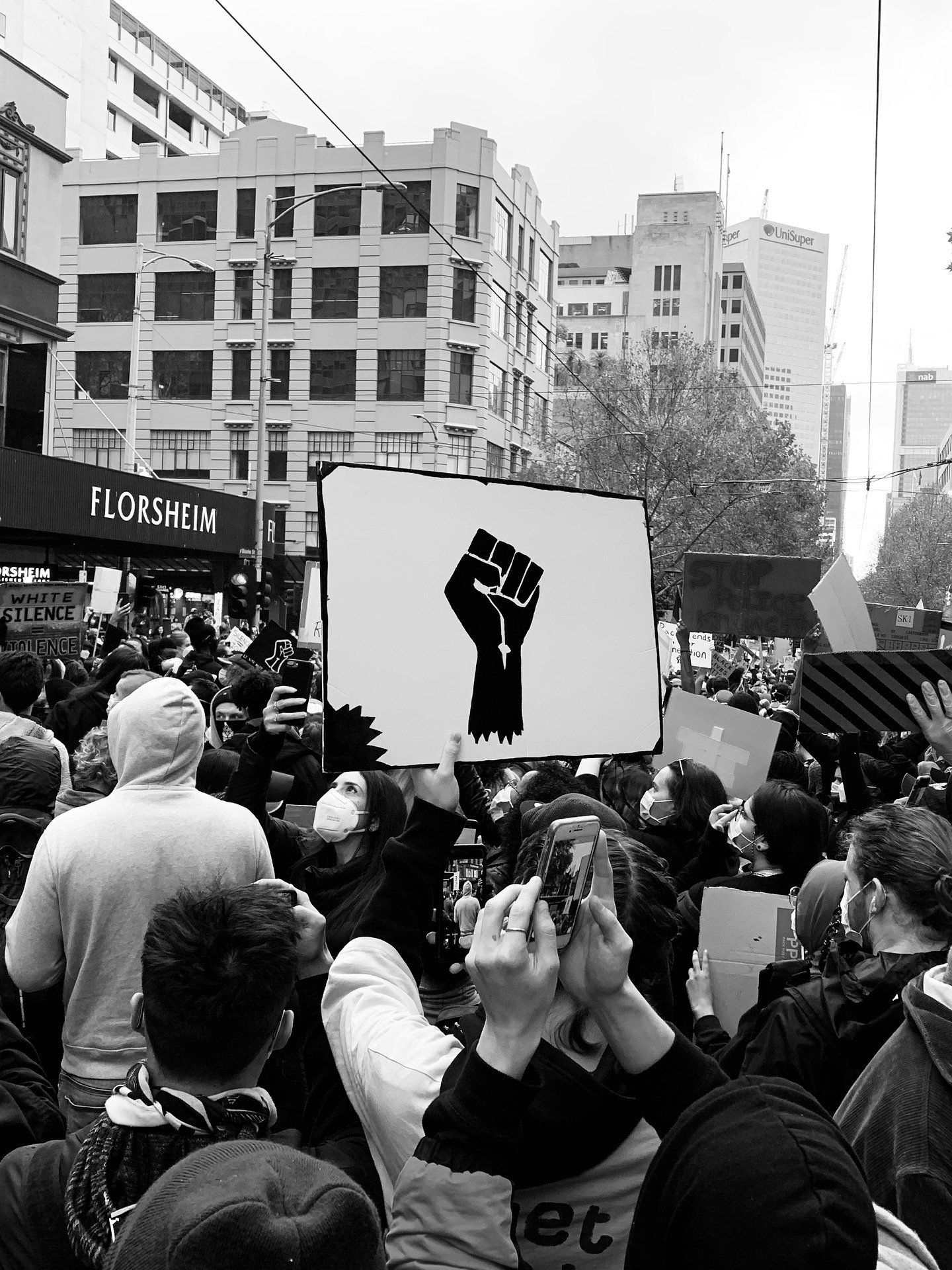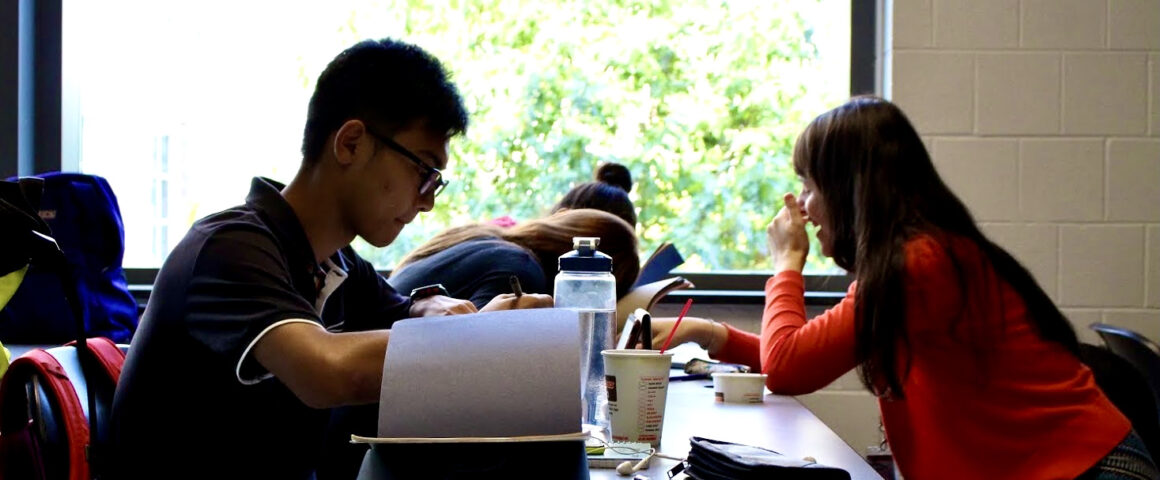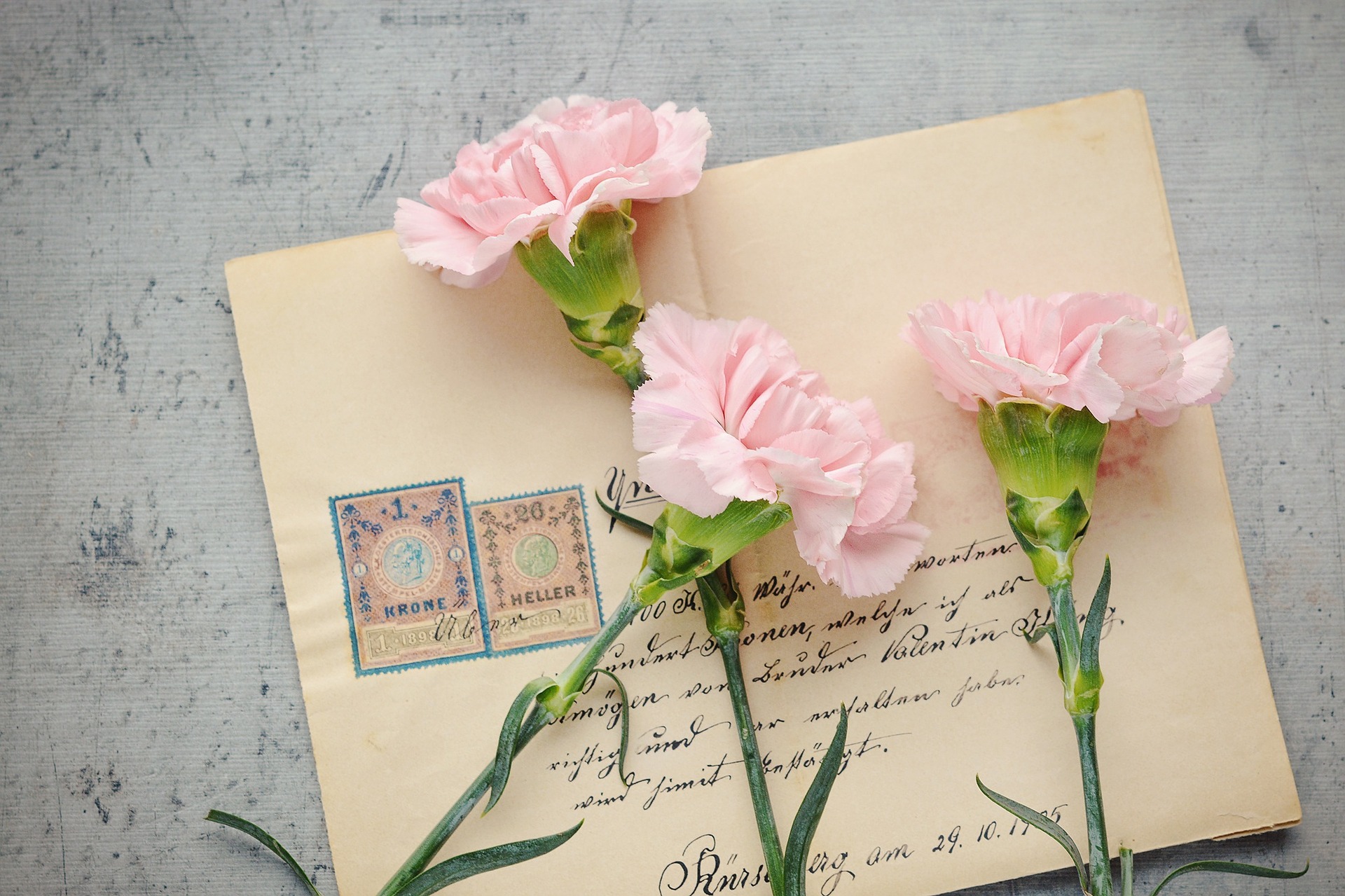On June 8, 2020, we reached out to writers and teaching artists and asked:
What is the role of the artist/writer in the current #BlackLivesMatter movement and in moments of injustice and social unrest?
Mahogany Browne, Poet/Singer/Deputy Director at Urban Word NYC
The role of the artist/writer/global citizen is what it has always been: to illuminate inconsistencies, unearth the truth, liberate the people with the information required to sustain their emotional health, and encourage civic engagement to further advocate for themselves. The role of the writer/global citizen/artist is to question everything. Demand justice for our communities, for our future generations, for nature.
We all must do our part. We must read the correct textbooks. We must have updated learning tools. We must have updated learning tools. We must demand teachers with experience in teaching in multi-cultural spaces to assure they don’t mistreat our young people. If we require racial equity classes for our teachers, then our young people won’t be tracked in classes and denied the tools required to learn efficiently. We must vote folks into regional office positions that are doing the work for the betterment of the community, which means voting for your local city councilperson. We must demand equal opportunities for healthcare and education. There is no one person to do this work.
A young person requesting diverse books in their school library and bringing that request to their teacher or parent is activism. The parents offering school funds for all children to eat for free is activism. The teacher working with the PTA facilitator to secure more funding for classroom supplies is activism. The crossing guard receiving their due diligence and respect or the cafeteria and custodial support receiving bonuses and thank you cards, all of these create a community that makes us responsible for the care of one another. If we consider each other, we are practicing as a collective body. And unity is activism too! We can all be active members in our communities and those efforts then trickle into the space where budgets are made. If we change the budget, we change the temperature of our school, the school feeds the neighborhood and the neighborhood feeds the people’s spirit.
Renée Watson, New York Times Best-Selling Author, Educator, and Activist
This is the time for artists and writers to use their art to respond, to heal, to protest. I have been looking to the artists and writers who came before me for direction and inspiration. What would they do right now? Toni Morrison wrote, “This is precisely the time when artists go to work. There is no time for despair, no place for self-pity, no need for silence, no room for fear. We speak, we write, we do language. That is how civilizations heal.” I am holding on to her words and creating work that celebrates and honors Black lives.
I think we have to broaden what fighting for justice looks like. Our young people might not be able to vote, but they can put their own stories on record, they can speak out against injustice, they can engage in conversations with leaders and make demands. All of that is a part of the movement as well and I hope educators are asking students, “What do you want to say?” “What do you want for your community, for our nation?” I think it’s important that young people know their voices are important and crucial to this movement. Through artmaking, poetry, and storytelling they can participate in this fight for justice. For educators, writers, and parents, the practical answer is to vote in ways that ensure our young people inherit a just world; and to live in ways that show by our actions that Black lives matter, that Black stories are worthy of attention not just during times of upheaval, but always.
Sherese Francis, Writer and Mixed Media Artist
Throughout history, art has inspired many to question the world in which we live and take action. An artist should be a witness, should speak truth to the delusions and propaganda of power and privilege. Use your art in service of those who are most marginalized in society. We are frontline workers in helping envision and build a future beyond these movements.
Institutional racism runs throughout our educational system. Black students are targeted and criminalized within school systems. School curriculums treat Black and other marginalized people’s histories and topics as outside of main American history as if those histories are not part of the fabric of America. Teachers and administrators need to examine their personal biases against students with different racial and cultural backgrounds and stand up to others who do not. Ask students what they need in order to feel heard, respected and valued; provide language and stories that helps students empower themselves. Remind them that they have a voice and have a right to interrogate the educational system and society in which they learn and live because, especially for marginalized students, it was not created with them in mind. The fight is larger than police brutality, it is the poison at the root of our entire society and a true movement for justice recognizes that.
Ask students what they need in order to feel heard, respected and valued; provide language and stories that helps students empower themselves. Remind them that they have a voice and have a right to interrogate the educational system and society in which they learn and live because, especially for marginalized students, it was not created with them in mind.
Sherese Francis, Writer and Mixed Media Artist
Dave Johnson, Poet & T&W Artist
Writers are Readers first. Read Black Writers. Read more Black Writers. Read Black Writers from all over the world. Read Black writers of all persuasions. Discover Black Writers are as diverse or more so than anyone else in the planet. Read Black Writers out loud to your friends and family. Read Black Writers to strangers. Learn from Black Writers. Now you’re ready to write your next story, your next poem.
Listening closely to students is always vital to creating a safe space where all voices are heard and can be shared. We can only know how and what our students are fighting for when we are fully tuned-in. And then inspire them to create by employing a diverse cacophony of voices as literary models. Some of those models speak directly to our students lives. Some of them challenge students to stretch beyond known boundaries. Teach them to take risks, to say yes at every opportunity. And justice can only come with opportunity. Pave an avenue for that opportunity.
David Barclay Moore, Author of The Stars Beneath Our Feet
As a writer, I always believe in fun, writing exercises to foster growth and awakening in our children. One such exercise, which can really engage young people during these extraordinary times, explores empathy.
Encouraging children to write down their thoughts, you can ask them to remember a recent time when they had a disagreement with another child, or even an adult. Ask them to relate the details of the discrepancy and why it made them feel the way that they felt. Then, ask the child to switch places with the person they argued with, to take on that other one’s perspective.
Have them write down what it might have been like to participate in the discrepancy from the opposite side and talk about those ideas. Even further, you can ask the child to take on the life of another child whose way of living is far different from their own.
What are this other child’s mornings like? What do they eat for meals? Have them describe this child’s neighborhood and things in their life that are important to them. Things that, perhaps, worry them.
Discuss, discuss, discuss.
Write, write, write.
Rewind.
Shanelle Gabrielle, Deputy Director, Urban Word NYC
The artist/writer is and has always been the one to put our politics, politicians, policies, and societal problems into the fire. Art and words can paint full pictures and expound on ideas that lead to action. The creative crafting of words is action as well as a living testament to every movement time. The ideals of the #BlackLivesMatter movement existed within our storytellers long before we had a hashtag, and now continues to support it.
Our youth are already out there bringing their full selves to protest. They are so resilient and brilliant and unapologetic. We seek justice for them through their empowerment. We must encourage the fire they already possess by allowing them to see themselves in the history told in classrooms and by giving them spaces to further comprehend the power they have and ways to channel it. We must give them the tools they need to prepare them for the systematic oppression that they aren’t always aware is there, finding ways for them to participate in their own liberation. Lastly, we need to be active participants in our government operations. We must sit on juries (and stop trying to get out of them) so someone can be in the room who understands when our youth are being criminalized. Lastly, we must vote at every election, holding candidates accountable for the needs of those who cannot vote.
Samara Huggins, Student and Artist
It is an artist’s responsibility to not simply observe the events of this time, but to absorb and bleed them into creative endeavors. I don’t catalogue sound bytes of chants and united civil disobedience as my roommate does. My roommate is Chinese. For her, this is a new country with a new social uproar concerning issues that she’s never fathomed. For me, a Black woman from Georgia, this is Tuesday. In some way, I feel that I ought to record more than just my own words of reflection, such as the harmonious outcries of pain rising from the streets. At times, I feel that my voice should be woven into that choir. However, I know that speaking out is not my strength, I know that being seen is not my strength, so I want to fight with the weapons with which I am equipped. With the gift of written language, with the heart for storytelling. This is a reality which yearns to be shared by as many as possible who can retell it with authenticity, with passion, with curiosity and with an interest in where we go from here.
“I think that reading and writing are important — giving people the skills to write about their individual experiences is a political act.“
Luis Jaramillo, author of The Doctor’s Wife and Director of the Writing Program at the New School
Maya Pindyck, Poet & Assistant Professor/Director of Writing at Moore College of Art & Design
Just as there is no right way to protest (as Trevor Noah points out), there is not a right role of the artist/writer in the BLM movement. Like everyone, artists/writers need to be awake human beings actively responding to what’s going on—that could mean standing on the street in protest, writing a poem, reading and disseminating words or images by artists of color, talking to your kids about racism, checking in with Black friends & listening, calling your mayor, doing a loving-kindness meditation to stay connected to the part of you that can feel another person’s pain and wants to heal that pain. Artists/writers need to understand that they are first and foremost interconnected beings. Writing/making must come from that place of connection for its language to move, especially in times of injustice.
There are so many roles, so many ways. That said, artists/writers share common ground in their dedication to wielding the power of material– words, visual images, their bodies—to make movement, to make a movement inside what is happening. In moments of injustice and social unrest, we turn to artists/writers to pump blood back into our hearts and to remind us of the possible worlds we are capable of imagining and creating.
Napoleon Felipe, Poet and Teaching Artist
I am not sure of the role writers in the #BlackLivesMatter movement. What I do know is this feeling I get when I think about all the short stories and drawings that people have shared with me over the years, people I’ve worked with closely on these projects. I think about how wonderful it is that we turned human thought into something tangible. Something people can connect with. Some of these people were seeking deliverance from dark times or they wanted to express the way they see life in positive ways. Perhaps we are guides to uplift people.
I believe what is most important is how we are connecting with our students. Getting to know them is key, and spending time examining backgrounds, beliefs and biases. Not every student experiences Injustice the same way. Making sure we are sensitive and consistently available to help shows them that we are there for them, which also becomes an example of how they can approach issues in turn for others. Educating our students can help tackle the issue, but also utilizing our power of self expression through art can be a powerful tool.
Libby Mislan, Poet and Teaching Artist
I feel like seeking justice for our students can come in so many forms— the first that comes to mind is ensuring that we as educators are actively learning and deepening our own anti-racist practice, because that is reflected in what and how we teach. With this knowledge base, we can fuel our students’ creative expression through curriculum that directly addresses historical and present day injustice, builds critical thinking skills, and gives students practice in speaking out against systems of oppression. We can also encourage our students to amplify their voices by sharing their poetry and writing outside of their school communities, and seeking outlets for them to do so. Alternatively, we can share their work ourselves (with consent) in other organizing or community spaces that we occupy. On a more macro level, we can step back to look at the NYC education system as a whole, and engage with the movement to desegregate schools, end police presence in schools, and re-distribute city funds from policing into education.
Ray Lin, Creative
I believe as an artist at this time, for me, my participation is largely one of learning, observing, and absorbing the responses to #BlackLivesMatter and giving space to create a dialogue between the community and those they are trying to reach. I hope to lend my voice and skills to this cause, to provide a way for others to amplify and execute their visions in this time. I acknowledge the responsibility carried by all that are in the struggle for change. I show solidarity by giving my time and my body to protesting for what I believe in, that we should hold people accountable to their actions, that racism is not an individual problem but a collective one. To own this and not combat it with indignation and to think that “good people” do not share in its propagation in everyday thoughts and speech. It is in the “every day” that people who believe they are good people, that they are incapable of racism, spout rhetoric that reveals it. I’ve seen “good people” speak of the death of George Floyd, but not call it by what it is, a murder. This is the way racism seeks to pivot and deflect. I’ve seen so much opposition to acknowledging that racism even exists. That this is the doing of a “few bad apples” and that the protests are not the way because it makes some feel uncomfortable because a wall is painted or there is property damage done. When someone would consider the notion of ”property over people,” it shows deference to upholding racist views. A wall can be repainted. Stone and glass can be replaced. Human life is not replaceable. Their lives matter, Black Lives Matter. These are the observations I carry with me and they will inform my work as an artist in the future.
Susan Willerman, Theater Teaching Artist
We need to continue and renew our commitment to helping each student we work with find and express their voice and to listen deeply to them. Sometimes that means standing up to school administrations or teachers. If I were working in a school now, this would be a time to suggest Black Lives Matter as a discussion topic and talk about how this movement is impacting the students. We could ask them to respond in writing with their personal experiences and how they see this movement affecting them and their neighborhoods. (Whatever their race) As a theatre artist, I would also suggest reading plays by August Wilson and other great African American writers, who may or may not directly dramatize the issues but address how characters are affected by the issues of racial injustice. The students can use those as inspirations for further discussion and to write scenes or monologues. Their pieces could be sent to people in power who could make a difference in the Schools.
I think the more we can educate ourselves, the more equipped we will be to help our students. That is one thing I am doing more these days, reading the powerful, thoughtful pieces of the great writers and thinkers – both Black and White.
Teachers & Writers Magazine is published by Teachers & Writers Collaborative as a resource for teaching the art of writing to people of all ages. The online magazine presents a wide range of ideas and approaches, as well as lively explorations of T&W’s mission to celebrate the imagination and create greater equity in and through the literary arts.



